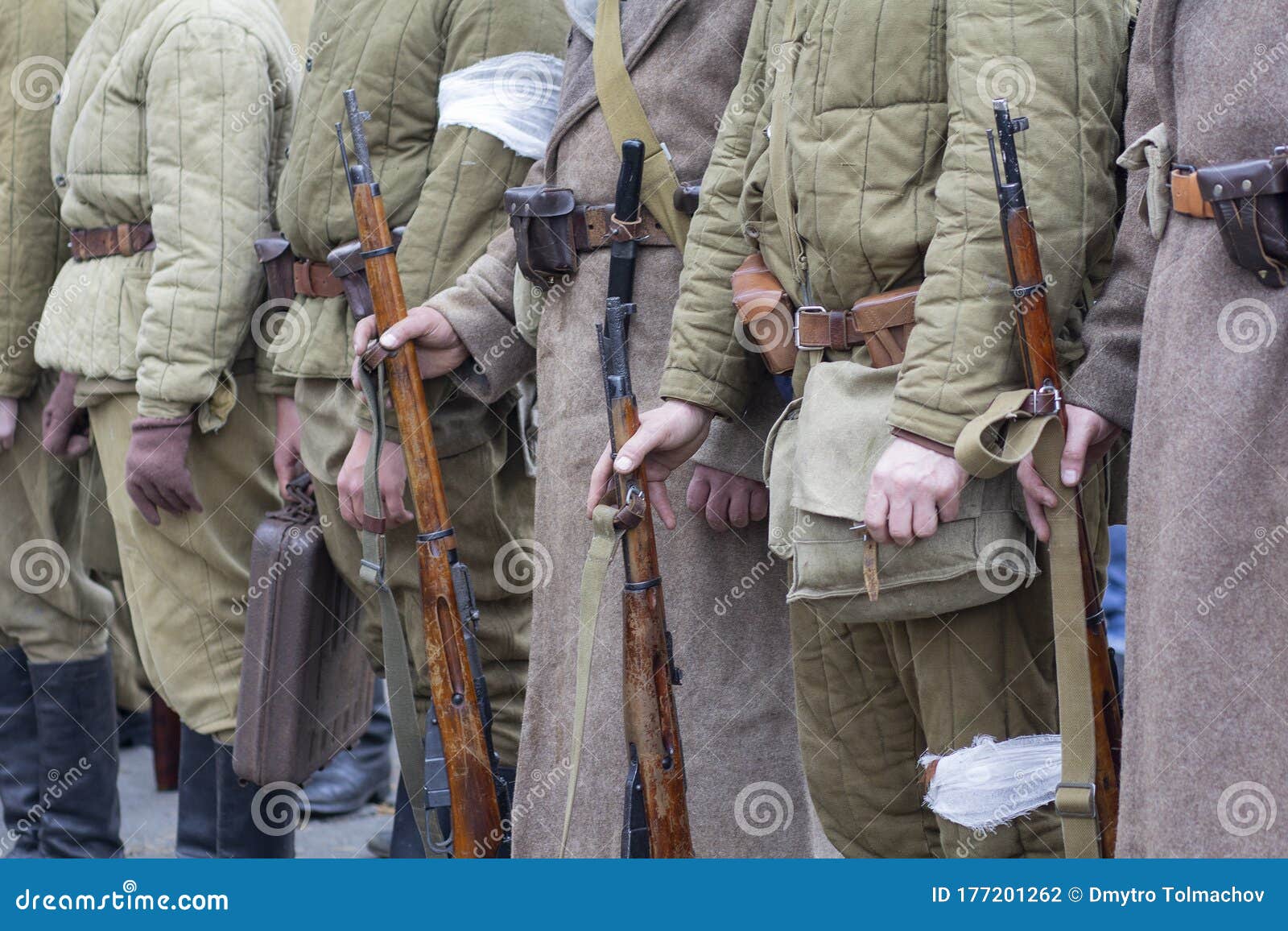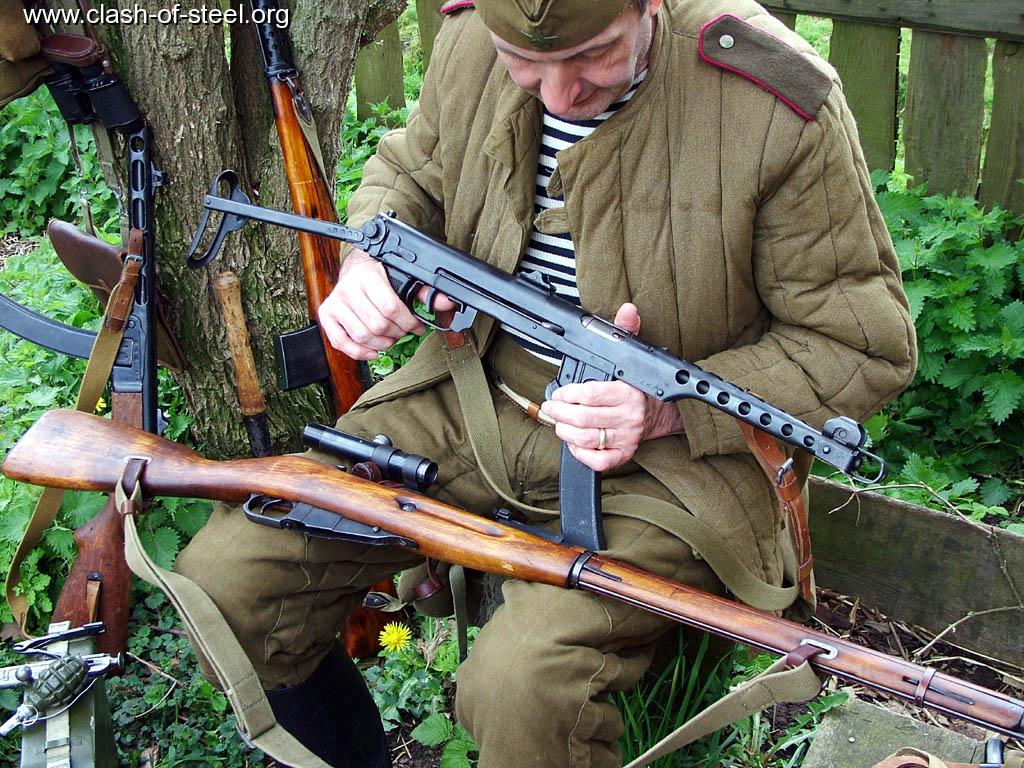Soviet Ww2 Weapons - The PPSh-41 (Russian: Пистоле́т-пулемёт Шпа́гина, tr. Pistolét-pulemyót Shpágina-41, lit. "Shpagin-41's submachine gun") is a Soviet machine gun designed as a Georgi and alternate PP stream. -40. A common Russian nickname for the gun is "papasha" (папа́ша), meaning "father",
The PPSh is a charge-fed selective fire submachine gun that uses a bolt-operated, recoil action. Made mostly of stamped steel, it can be loaded with a box or drum magazine and fires the 7.62×25mm Tokarev pistol cartridges.
Soviet Ww2 Weapons

The PPSh saw extensive combat use during World War II and the Korean War; In Eastern Bloc countries, monuments commemorating Red Army operations usually bear the PPSh-41.
Miniart 35329 U.s. Infantry Weapons & Equipment
It became one of the main infantry weapons of the Soviet armed forces during World War II, with around 6 million PPSh-41s produced during this period, making it the most produced submachine gun of the war. In the form of the Chinese Type 50 (authorized copy), it continued to be used with the Viet Cong until the 1970s and with irregular armies.
The inspiration for the development of the PPSh came from the Winter War against Finland, where the Finnish military used the Suomi KP/-31 submachine gun as a highly effective tool for close combat in forests and built-up urban areas. Its 71-round drum magazine was copied and later adopted by the Soviets for the PPD-40 and PPSh-41 submachine guns.
The PPD-40 was later put into mass production in 1940, but was expensive to manufacture in both materials and labor, as it used numerous milled metal parts, especially its receiver. Georgy Shpagin's main idea to reduce costs was to use metal stamping for the production of most parts. Shpagin built a prototype PPSh in September 1940, which also included a simple gas compressor designed to prevent muzzle rise during detonation; This improved photo clustering improved by about 70% compared to PPD.
The new weapon was produced in a network of factories in Moscow, with local high-level party members directly responsible for meeting production targets. A few hundred guns were produced in November 1941, and another 155,000 were produced over the next five months. By the spring of 1942, PPSh factories were producing about 3,069 units per day.
Decorative Pattern Of The Soviet Weapon Of The Second World War On White Background Stock Photo
Its parts (except the barrel) can be made by relatively unskilled labor in an auto repair garage or sheet metal shop with tools readily available, freeing up more skilled workers for other tasks. The PPSh-41 uses 87 components, compared to 95 for the PPD-40, and the PPSh can be manufactured in about 5.6 hours of machining (later revised to 7.3 hours) compared to 13.7 hours for the PPD.
Barrel production was often simplified by using a barrel for the 7.62 mm Mosin-Nagant: the rifle barrel was cut in half and two PPS barrels were made from it after chambering for the 7.62 × 25 mm Tokarev cartridge.
After the German Army captured a large number of PPSh-41s during World War II, a program was launched to convert the weapon to the standard German submachine gun cartridge - the 9×19mm Parabellum. The Wehrmacht officially adopted the converted PPSh-41 as the "MP41(r)"; Unmodified PPSh-41s were designated "MP717(r)" and were chambered for 7.63×25mm Mauser ammunition (similar to the 7.62×25mm Tokarev, but slightly less powerful). Manuals in German for the use of captured PPSh were printed and distributed to the Wehrmacht.

In addition to replacing the cylinder, the converted PPSh-41s also had a magazine adapter installed, allowing them to use the MP 40 magazine. Less powerful 9mm rounds typically reduce the cyclic rate of fire to 800 to 750 RPM. Modern aftermarket conversion kits based on the original Wehrmacht also exist using various magazines, including St. Petersbucks. Some scientists were able to work with original Soviet drum and stick magazines, eliminating the adapters as well as using the more powerful 9×23mm Winchester ammunition.
Gun Ppsh 41 Hi Res Stock Photography And Images
As standard, each PPSh-41 came with two factory-fitted drum magazines, matched to the weapon with marked serial numbers. If drum magazines are mixed and used with different PPSh-41 serial numbers, a loose connection may result in poor retention and feeding failure. Drum magazines were replaced by a simpler box-type PPS-42 magazine holding 35 rounds, although an improved 1mm steel magazine was also introduced in 1944.
The PPS-43 was later introduced into Soviet service in 1943, was more basic in design than the PPSh and had a moderate rate of fire, but did not replace the PPSh-41 during the war.
The Soviet Union experimented with the PPSh-41 in the anti-personnel close air support role, the Tu-2sh variant of the Tupolev Tu-2 bomber mounted dozens of machine guns in forward fuselage racks.
More than 5 million PPSh submachine guns were produced up to the end of the war. The Soviets often manned platoons and sometimes exhausted gun companies, giving them great short-range firepower.
Soviet Weapons Of World War Ii Royalty Free Vector Image
Thousands more were dropped behind enemy lines to equip Soviet partisans to disrupt German supply lines and communications.
Soviet submachine gun PPSH-41, part of the Korean War Weapons Exhibit at the Fort Lewis Military Museum, Fort Lewis, Washington, USA
After World War II, large quantities of PPSh were supplied to Soviet-aligned states and communist guerrilla forces. During the Korean War, the Korean People's Army (KPA) and Chinese People's Volunteer Army (PVA) received a large number of PPSH-41s fighting in Korea, in addition to the North Korean Type 49 and Chinese Type 50, both of which were licensed copies. of the PPSh-41 with minor mechanical modifications.

Although relatively inaccurate, the Chinese PPSh had a high rate of fire and was well-suited for the close-range battles that usually took place, especially at night.
Brickarms Russian Weaponspack V2, Custom Guns For Lego® Minifigures
UN forces in defensive outposts or on patrol often have trouble adequately returning fire when attacked by infantry companies equipped with PPSh. Some US infantry officers ranked the PPSh as the best combat weapon of the war: although it lacked the accuracy of the M1 Garand and the US M1 carbine, it provided more firepower at shorter ranges.
Infantry Captain (later General) Hal Moore said, "Automatically, it sprayed a lot of fire, and most of the killing in Korea was done at close range, and it was done quickly—it was a matter of who responded quickly. In situations like that and above what I was." . A close patrol battle ends very quickly and we usually lose because of it."
However, the US military felt that their M2 carbines were superior to the PPSh-41 at typical ranges of 100-150 meters.
The PPSh-41 fires the standard Soviet pistol and machine gun cartridge, the 7.62×25mm Tokarev. Weighs approximately 12 pounds (5.45 kg) with a loaded 71-round drum and 9.5 pounds (4.32 kg) loaded with a 35-round magazine. The PPSh is capable of a rate of about 1250 rounds per minute,
A Soviet Light Machine Gun Degtyarev (dp 28), Calibre 7,62 X 54r, Made In 1943,. Serial Number Tb135. Pitted, No More Bluing, No Magazine. With A Leather Sling Of Another Model. Historic,
Very high rate of fire compared to other WWII military machine guns. It is a durable, low-maintenance weapon made from cheap, readily available materials, mainly sheet metal and wood. The final production PPSh has higher ejection and an L-type rear sight that can be adjusted for ranges of 100 and 200 meters. A crude compressor is built into the barrel jacket, intended to reduce muzzle rise during automatic firing. The compsator was moderately successful in this, but greatly increased the ratio of the muzzle flash to the gun. The PPSh also has a hinged receiver to facilitate field removal and weapon cleaning.
A chrome-lined bore allows the PPSh to withstand both abrasive ammunition and long intervals between cleanings. No foregrip or forearm grip is provided and the operator must grasp the weapon behind the drum magazine with the support hand or otherwise hold the lower edge of the drum magazine. Although 35-round curved box magazines were available from 1942, the average Soviet infantryman in World War II carried the PPSh with a 71-round magazine.
Although the PPSh drum stores 71 rounds, it can be misplaced with more than 65 rounds.

In addition to feeding problems, the drum magazine was slower and more cumbersome to load ammunition than later 35-round magazines, which after 1942 increasingly filled the drum. While holding fewer rounds, the box shed has the advantage of offering better quality. Hold the support hand. Although the PPSh is equipped with a sliding safety bolt, the gun's op-bolt design poses a risk of accidental discharge if the gun is dropped on a hard surface.
Tbt: This Submachine Gun Helped Finland Repel A Soviet Invasion Then Inspired The Russians To Build Their Own
Wehrmacht Feldwebel Wilhelm Traube armed with a PPSh-41 scans the scene of Stalingrad amid a ruined city in the fall of 1942. The ruined city is today known as Gagarin Park.
A Red Army soldier armed with a PPSh-41 captures a German soldier after the Battle of Stalingrad in 1943.
Sig p365 tulster holster, sig p365 iwb holster, sig holsters p365, sig p365 sas holster, sig p365 xl holster, sig p365 hybrid holster, appendix holster sig p365, safariland holster sig p365, sig p365 belt holster, sig p365 holster, sig p365 purse holster, sig sauer p365 holster
0 Comments